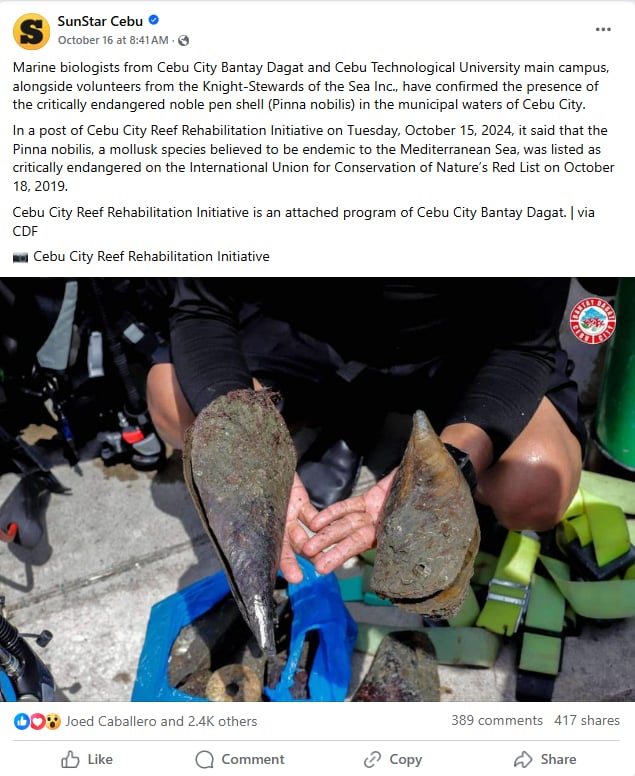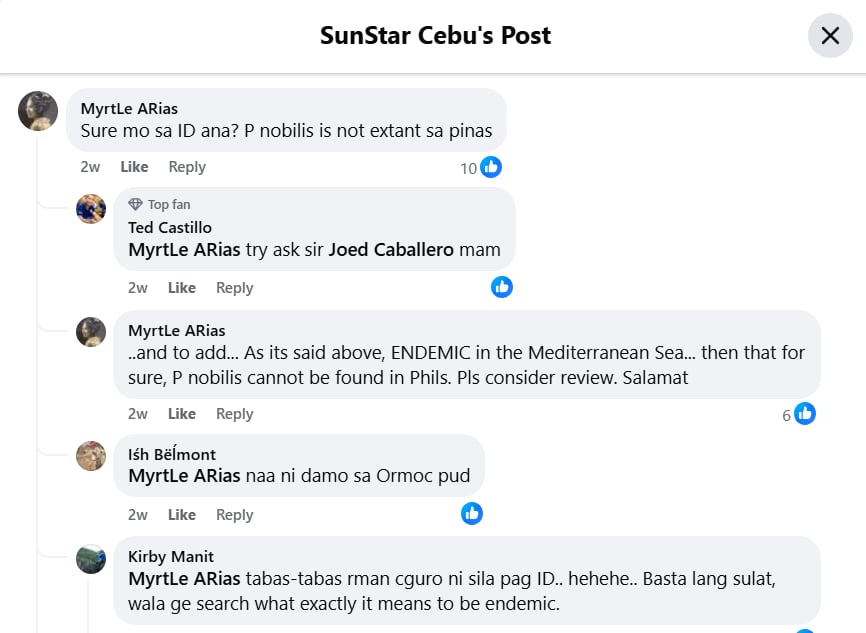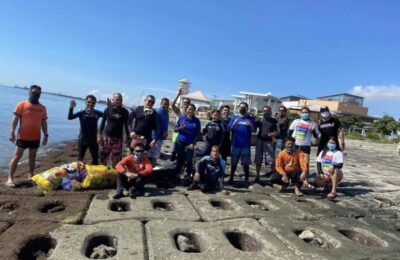Of all things I had expected to find on a beautiful Saturday morning, it certainly was…
Pinna nobilis in Cebu City?
The publication of an October 16, 2024 news report saying marine biologists from the Cebu Technological University and Cebu City Bantay Dagat finding – within the municipal waters of Cebu City – what they suspect is a species of critically-endangered mollusk, has got other marine biologists on social media fired up.
Pinna nobilis, also known by the common name noble pen shell, is a type of mollusk believed to be endemic to the Mediterranean Sea. It got entered into the International Union for the Conservation of Nature’s Red List of Critically Endangered Species on October 18, 2019, as per the IUCN website.

A sample of the mollusk was obtained during an exploratory dive last August 22, 2024, with marine biologists Joed Caballero of CTU and Jhon Ismael Fernandez of Bantay Dagat presenting their finding to the Cebu City Bantay Dagat Commission on October 11, 2024, following a confirmation process that took over two weeks.
Because of ample literature describing the species as “endemic to the Mediterranean”, one marine biologist wrote on the Facebook page of the newspaper that carried the story and questioned the certainty of the species identification.

But Caballero and Fernandez, during their October 11 presentation to the Commission, said this wasn’t the first time the species was found in Philippine waters.
In fact, researchers from the Institute of Marine Fisheries and Oceanology of the University of the Philippines Visayas’s College of Fisheries and Ocean Sciences, wrote about finding the species in the February 19, 2024 edition of the Acta Ichthyologica et Piscatoria journal.

https://aiep.pensoft.net/article/112465/
Fernandez, upon finding how their October 11 presentation to the Bantay Dagat Commission, which became the basis of the October 16 media report, was being questioned by some quarters, also took to social media to encourage people to “please periodically assess” what were previously accepted “facts.”
But veteran researcher Dr. Raamah Rosales, who previously spearheaded a marine biodiversity assessment of Cebu City’s municipal waters and who sits as a member of the Commission, welcomed the uncertainly expressed by some quarters.
He offered to reach out to contacts in South Korea for a molecular testing.
Immediately following the October 11 presentation, the Commission, an attached agency to the Office of Cebu City Mayor Atty. Raymond Alvin Garcia, has authorized a wider biodiversity assessment of the population density of mussels in the municipal waters of Cebu City.
It is not yet known how a species endemic to the Mediterranean Sea found its way to the Indo-Pacific region, particularly in the municipal waters of Cebu City.
But its inclusion in the IUCN Red List is intended to influence national and international policy and decision-making, and to provide information to guide actions towards its conservation and recovery.




